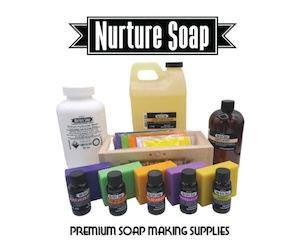Bath Bomb Failures: Troubleshooting Your Bath Bomb Recipe
First and foremost, let’s start with this. Oftentimes, when you have bath bomb failures due to not holding shape, it’s moisture related. The first thing we’re going to discuss is climate, and how this can effect your bath bomb outcomes.
After that, we’ll discuss some common issues crafters run into when making bath bombs. Whether you are a seasoned pro, or a complete newbie, troubleshooting is inevitable in bath bomb making.
Climate & My Bath Bombs?

Humid Climate:
As you’re probably aware of at this time, climate can in fact, effect your bath bomb. Consequently, if you live in a humid environment and plan on making bath bombs for selling, it’s wise to invest in a dehumidifier.
If your mixture is well developed, and you’re keeping 40% – 50% humidity when storing your bath bombs, generally, they’ll hold up just fine. You may even find above that percentage they do well.
However, we have found the ideal humidity is around 40% for our climate. It may also help wrapping your bath bombs. Climate will have less impact on them, at this time.
After they’ve dried for 48-72 hours, wrapping them in shrink wrap, helps keep some consistency. An alternative to combat humid climates when making bath bombs is to use a specific binding agent. For example, alcohol, because your ingredients or mixture, will dry much faster then using a spray bottle with water. Thus, releasing the moisture.
Dry Climate:
For those that live in a dryer environment, instead of your bath bombs being on the wetter side and crumbling or not holding shape due to moisture in the air, you may find your bombs are cracking because they are simply, to dry.
A few solutions to your problem would be using water as a binder or adding a touch more oil to your recipe, as these both will help with keeping your bath bomb a little more moist. You could also try shrink wrapping your bath bombs a little sooner then usual, however your have to be careful not to trap to much moisture because this could lead to other problems.
Common Reasons For Bath Bomb Failures Continued:
Storing A Bath Bomb:
Storage of your newly made bath bombs is another important point to take note of. Depending on the ingredients that you use, like hardeners and binders (i.e. water vs alcohol) will have an impact on this process.
For instance, when using water as a binder, the drying process is longer. Reason being, water takes longer to evaporate. Also, if you include increased amounts of carrier oils, this can impact drying time as well.
Hardeners (like kaolin clay) help to draw moisture out. Ultimately, this helps the bath bomb harden quicker. However keep in mind, it may also have an effect on it’s density. Resulting in a bath bomb that sinks to the bottom of the tub.
For these reasons, it’s important to understand what your ingredients are. Secondly, what are the intentions of your bath bombs. For example, do you want them to float, spin, bubble and/or fizz?
Shrink Wrapping:
Typically we let our bath bombs dry with humidity less then 40-45% for roughly 24-48 hours. Afterwards, we’ll shrink wrap and package. Be mindful if you shrink wrap to early, you could trap moisture within (like we discussed earlier).
After shrink wrapping, we tend to store in an airtight container (like plastic storage bins), that way they don’t end up absorbing to much moisture in the air.
The shrink wrap helps, but why take the chance. Remember, bath bombs may not be the hardest thing to make, but they tend to be very finicky if you’re not precise with your process.
Cracking:
There can be varying reasons why a bath bomb cracks. Oftentimes, it has to do with the usual suspect, the wet : dry ratio. For example, if your mixture is to dry, it can crack while drying, or even when you un-mold.
However, sometimes you can’t tell until it starts to dry. Afterwards, you may see small cracks or imperfections in the body of the bath bomb.
Here are a few interventions or things you can do to troubleshoot your issue:
- Purchase a digital thermometer with humidity gauge. They are only a few dollars at Walmart. This will allow you to keep track of dampness or dryness in the air. Raining conditions outside, oftentimes lead to difficult days to make bath bombs.
- Try using water as your binder.
- Try using a witch hazel/water combination as you spray binder.
- Increase the amount of carrier oils to the mixture.
- Pack the mixture, tight. “Under Packing” (if you will) can also cause your bath bomb to crack. You can also purchase a bath bomb press machine, or handheld machine. These tools can give you better pressure, and decrease your energy expenditure as well!
Crumbling:
This failure usually has to do with the mixture being to dry or packing issues, as well.
- Make sure your are packing your mixture tight. Once packed, allow your bath bomb to sit in the mold for a few minutes before unmolding.
- Using water as your binder may help in this case as well. You can also use witch hazel. However, we either use water or a water/alcohol mixture, 50/50 in this case.
- Try some hardeners in your mixture. A little hardener goes along way. We’ve found even adding just a small amount, can have a huge effect on the hardness of a bath bomb. Pay attention to your wet ingredients too. Too much hardeners, can draw out moisture too fast. In this case, add extra oils, or wet ingredients.
- Try to premix your colorants. This includes blooming dyes or adding a wet ingredient to dissolve your powders prior to adding to your mixture.
Bath Bomb Developed Bumps!
Another common problem that bath bombers have with their mixture is developing bumps or “warts”.
Tip: It’s vital you keep track of batches. Which ones worked well and which ones didn’t.
Typically, bumps have to do with the mixture being to wet. So if this happens, lessen your binder or the amount of oils you’re using. This can occur if your humidity is to high as well, related to where the bath bombs are being stored. They will begin to draw in excess moisture from the air.
Resting Place After Un-Molding?
One last common issue that can happen in your quest to making the perfect bath bomb, is once un-molding it. Simply, where is the best place store them?
There are numerous places you could try. What you don’t want is to unmold the bath bomb and place it on a hard surface. This will result in either crumbling, or deformity on the bottom.
Even if your mixture is a little moist, but still holding it’s shape, place it on a soft layered cloth. One of the best options for us is a piece of egg foam. Egg foam can be purchased from many different places, including Amazon, for a low cost.
This should fix the issue, 99% of the time, unless your recipe is way off. If you were to un-mold your bath bomb and place it on an appropriate surface and it immediately crumbles or falls apart there is a definite issue with your recipe, or process.
This is actually a science. Depending on things like climate, can totally effect the bath bombs themselves. The most important piece of advice is to experiment and keep records. Surely, we still experiment all the time to find out what works best, depending on our intentions for each batch!
Final Thoughts!
Don’t get discouraged!
The great thing is, you can make really small test batches with minimal ingredients. After figuring out a base recipe, then scale it up. As bath bombs continue to increase in popularity, you should for sure enter into the scene!
If you come across other issues, be sure to leave a comment and we will answer your questions as soon as we can. Please remember that many people have the same issues with making bath bombs, so feel free to comment on each others posts and questions as well, so we can all help one another out!
Thanks for stopping by, and be sure to share our posts on social media if this was something you found helpful.



